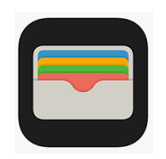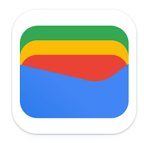Wie benutze ich…?
Besorgen Sie sich eine digitale Geldbörse (PayPal, Apple Pay, Google Wallet)
Um mit einer digitalen Brieftasche sowohl online als auch offline bezahlen zu können, müssen Sie ein Konto beim Anbieter der digitalen Brieftasche einrichten und Ihre Zahlungsmittel wie Kredit- oder Debitkarten zur Brieftasche hinzufügen. Sobald Ihr Konto eingerichtet ist und Ihre Zahlungsmethoden hinzugefügt wurden, können Sie Ihre digitale Brieftasche für Zahlungen verwenden.
Um eine Zahlung mit Ihrer digitalen Brieftasche vorzunehmen, müssen Sie die Brieftaschen-App auf Ihrem Mobilgerät öffnen und die gewünschte Zahlungsmethode auswählen. An der Verkaufsstelle können Sie dann einen QR-Code scannen oder Ihr Gerät auf ein kontaktloses Zahlungsterminal tippen, um die Zahlung abzuschließen.
Sie können Ihre digitale Brieftasche auch für Online-Zahlungen verwenden. Dazu müssen Sie auf der Website des Online-Shops oder -Händlers bei der Aufforderung zur Zahlung die Option zur Zahlung mit einer digitalen Geldbörse auswählen. Dann können Sie den Anweisungen in der App für die digitale Geldbörse folgen, um die Zahlung abzuschließen.
Die Verwendung einer digitalen Brieftasche ist relativ einfach und unkompliziert. In wenigen Schritten können Sie Ihr Konto einrichten und Ihre Zahlungsmethoden hinzufügen, um mit Ihrer digitalen Geldbörse schnell und einfach Zahlungen zu tätigen.
PayPal
Website: https://www.paypal.com/uk/home
Anwendung:

- Öffnen Sie die Kamera Ihres Handys
- Scannen Sie den QR-Code (Das kryptische Ding auf der linken Seite ist ein QR-Code. Wenn Sie einen scannen, wird normalerweise automatisch eine Website geöffnet. In diesem Fall werden Sie gefragt, ob Sie die PayPal-App herunterladen möchten).
- Holen Sie sich die App
Apple Pay/Apple wallet

- Die Apple Brieftasche ist auf jedem aktuellen iPhone vorinstalliert. Finden Sie die App.
- Tippen Sie dann auf Karte hinzufügen und folgen Sie den Anweisungen, um Ihre neue Karte hinzuzufügen.
Verwenden Sie eine Kreditkarte / Inländische Debitkarte online
Um eine Kreditkarte online nutzen zu können, müssen Sie über ein Kreditkartenkonto bei einer Bank oder einem Finanzinstitut verfügen. Sie müssen die Kreditkartendaten wie Kartennummer, Ablaufdatum und Sicherheitscode zur Verfügung haben – entweder physisch oder in einer elektronischen Brieftasche gespeichert.
Sobald Sie diese Angaben haben, können Sie Ihre Kreditkarte für Online-Einkäufe verwenden, indem Sie die folgenden Schritte ausführen:
- gehen Sie auf die Website des Online-Shops oder Händlers, bei dem Sie einkaufen möchten.
- wählen Sie die gewünschten Artikel aus und legen Sie sie in den Einkaufswagen.
- gehen Sie zur Kasse und geben Sie Ihre Versand- und Rechnungsdaten ein.
- Wenn Sie zur Zahlung aufgefordert werden, wählen Sie die Option zur Zahlung mit einer Kreditkarte.
- Geben Sie Ihre Kreditkartendaten ein, z. B. die Kartennummer, das Ablaufdatum und den Sicherheitscode, sowie alle anderen erforderlichen Informationen.
- überprüfen und bestätigen Sie Ihre Zahlungsangaben und senden Sie Ihre Zahlung ab.
Nachdem Sie Ihre Zahlung abgeschickt haben, wird die Transaktion bearbeitet und Ihre Kreditkarte mit dem Kaufbetrag belastet. Sie erhalten eine Bestätigung Ihrer Zahlung, und die gekauften Artikel werden an Sie versandt.
Insgesamt ist die Verwendung einer Kreditkarte im Internet eine einfache und bequeme Möglichkeit, Einkäufe zu tätigen. Wenn Sie die oben genannten Schritte befolgen, können Sie Ihre Kreditkarte für schnelle und sichere Online-Zahlungen verwenden.
Für eine Online-Überweisung müssen Sie ein Konto bei einer Bank oder einem Finanzinstitut haben, das Online-Banking anbietet. Außerdem benötigen Sie die Angaben zum Bankkonto des Empfängers, z. B. die Kontonummer und die Bankleitzahl, sowie den Betrag, den Sie überweisen möchten.
Sobald Sie diese Angaben haben, können Sie eine Banküberweisung verwenden, um eine Online-Zahlung vorzunehmen, indem Sie diese Schritte befolgen:
- Gehen Sie auf die Website oder die App Ihrer Bank.
- Loggen Sie sich in Ihr Bankkonto ein.
- Wählen Sie Geld überweisen.
- Geben Sie die Angaben zum Bankkonto des Empfängers ein, z. B. die Kontonummer und die Bankleitzahl, sowie den Betrag, den Sie überweisen möchten.
- Überprüfen und bestätigen Sie Ihre Zahlungsangaben und senden Sie Ihre Zahlung ab.
- Bevor Sie die Transaktion abschließen, werden Sie aufgefordert, die Zahlung durch Eingabe einer PIN oder höchstwahrscheinlich mit Ihrem Fingerabdruck oder Face ID zu autorisieren. wählen Sie die Artikel aus, die Sie kaufen möchten, und legen Sie sie in den Warenkorb.
Nachdem Sie Ihre Zahlung abgeschickt haben, wird die Transaktion bearbeitet und der Betrag von Ihrem Bankkonto auf das Bankkonto des Empfängers überwiesen. Sie erhalten eine Zahlungsbestätigung.

